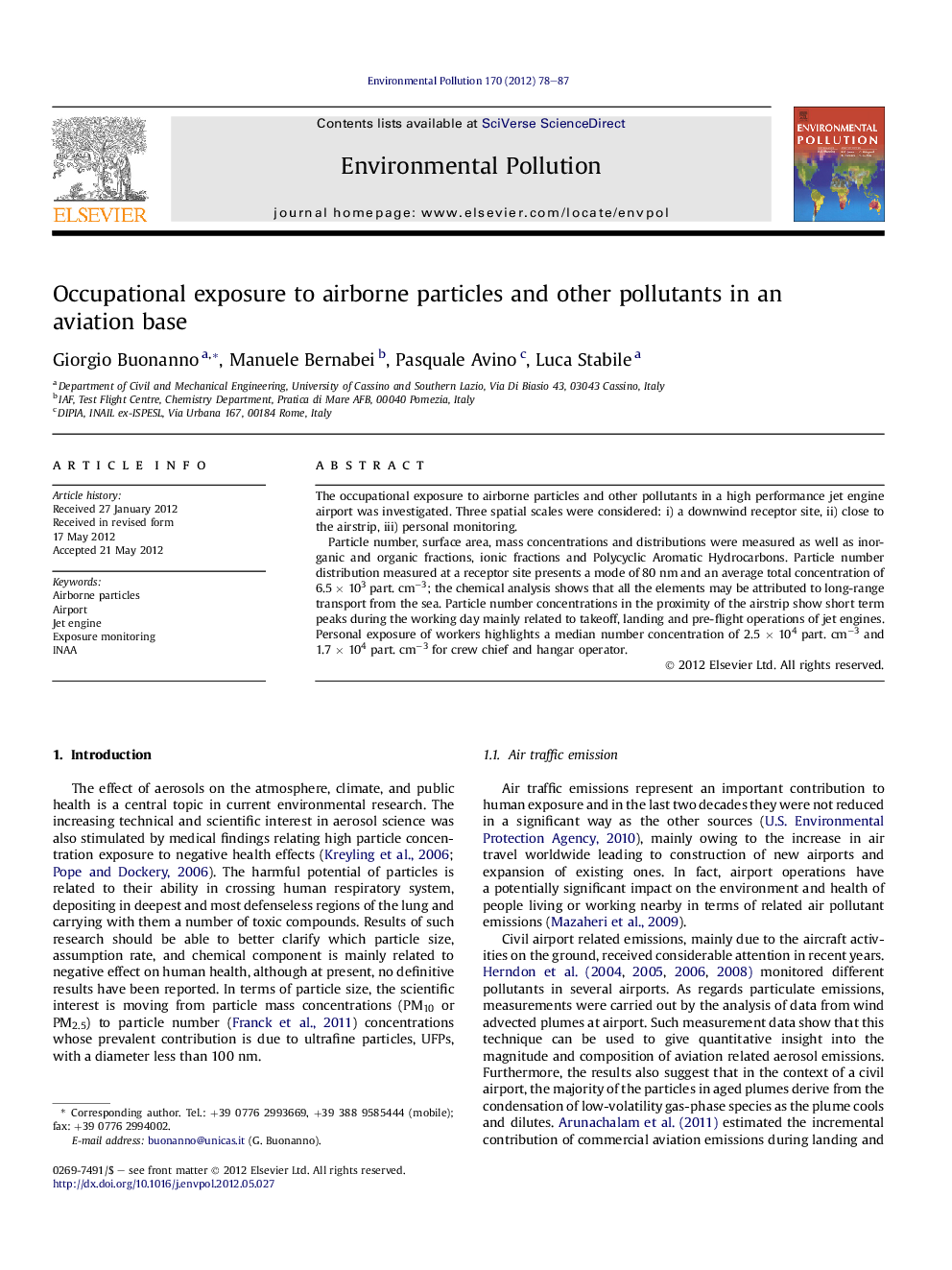| Article ID | Journal | Published Year | Pages | File Type |
|---|---|---|---|---|
| 4424756 | Environmental Pollution | 2012 | 10 Pages |
The occupational exposure to airborne particles and other pollutants in a high performance jet engine airport was investigated. Three spatial scales were considered: i) a downwind receptor site, ii) close to the airstrip, iii) personal monitoring.Particle number, surface area, mass concentrations and distributions were measured as well as inorganic and organic fractions, ionic fractions and Polycyclic Aromatic Hydrocarbons. Particle number distribution measured at a receptor site presents a mode of 80 nm and an average total concentration of 6.5 × 103 part. cm−3; the chemical analysis shows that all the elements may be attributed to long-range transport from the sea. Particle number concentrations in the proximity of the airstrip show short term peaks during the working day mainly related to takeoff, landing and pre-flight operations of jet engines. Personal exposure of workers highlights a median number concentration of 2.5 × 104 part. cm−3 and 1.7 × 104 part. cm−3 for crew chief and hangar operator.
► Air quality measures were performed at different spatial scales in an aviation base. ► Exposure to Polycyclic Aromatic Hydrocarbons was estimated. ► Particles at downwind receptor site show a marine origin typical of a coastal site. ► Main exposure peaks are related to pre-flight operations of jet engine aircrafts. ► Crew chief are exposed to highest concentrations even if these were not worrisome.
